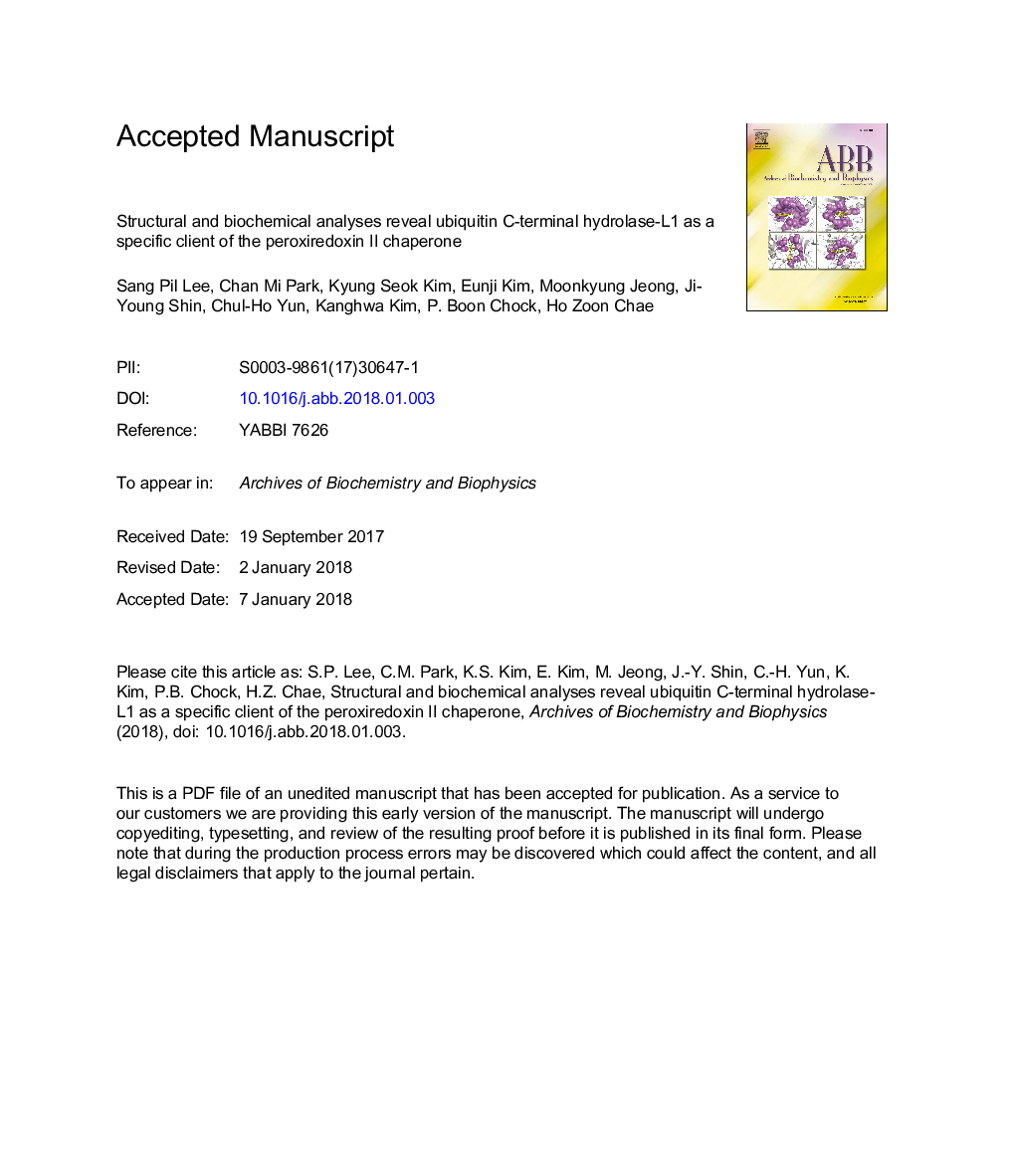| Article ID | Journal | Published Year | Pages | File Type |
|---|---|---|---|---|
| 8288776 | Archives of Biochemistry and Biophysics | 2018 | 45 Pages |
Abstract
Peroxiredoxins (Prxs) play dual roles as both thiol-peroxidases and molecular chaperones. Peroxidase activity enables various intracellular functions, however, the physiological roles of Prxs as chaperones are not well established. To study the chaperoning function of Prx, we previously sought to identify heat-induced Prx-binding proteins as the clients of a Prx chaperone. By using His-tagged Prx I as a bait, we separated ubiquitin C-terminal hydrolase-L1 (UCH-L1) as a heat-induced Prx I binding protein from rat brain crude extracts. Protein complex immunoprecipitation with HeLa cell lysates revealed that both Prx I and Prx II interact with UCH-L1. However, Prx II interacted considerably more favorably with UCH-L1 than Prx I. Prx II exhibited more effective molecular chaperone activity than Prx I when UCH-L1 was the client. Prx II interacted with UCH-L1 through its C-terminal region to protect UCH-L1 from thermal or oxidative inactivation. We found that chaperoning via interaction through C-terminal region (specific-client chaperoning) is more efficient than that involving oligomeric structural change (general-client chaperoning). Prx II binds either thermally or oxidatively unfolding early intermediates of specific clients and thereby shifted the equilibrium towards their native state. We conclude that this chaperoning mechanism provides a very effective and selective chaperoning activity.
Keywords
Related Topics
Life Sciences
Biochemistry, Genetics and Molecular Biology
Biochemistry
Authors
Sang Pil Lee, Chan Mi Park, Kyung Seok Kim, Eunji Kim, Moonkyung Jeong, Ji-Young Shin, Chul-Ho Yun, Kanghwa Kim, P. Boon Chock, Ho Zoon Chae,
